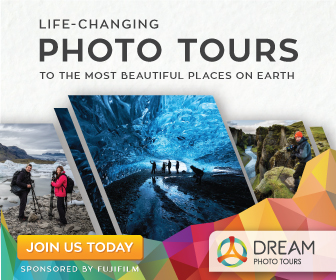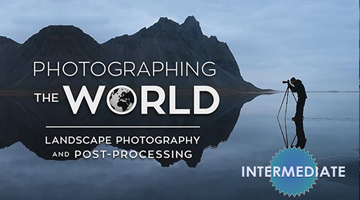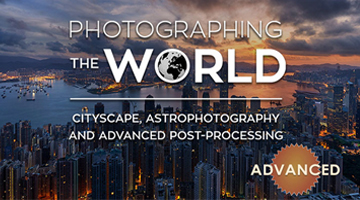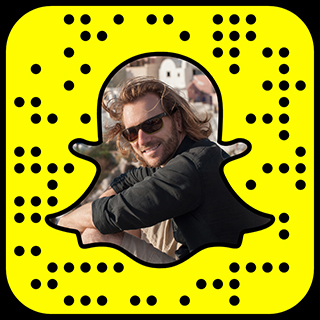There are some amazing viewpoints all over the world that beg to be photographed. Some of which are so iconic and so easy to access that thousands of people visit each year to take the same photo.
The whole area of Cinque Terre, Italy is a perfect example. Each town is extremely picturesque with many easy to get to places to take photos. In the case of today’s photo in Vernazza, I was standing in a cluster of 5 people with cameras set on tripods.
So as photographers, what can we do about it? How can we make a unique photo of something that’s been photographed millions of times? The subject is already established, so what’s next?
Read on to learn about how some different times of day can dramatically set your photography apart from others.
Daily Banana – The Beautiful Vernazza
Monkey Wisdom – Choosing The Right Moment
If the weather is good, consider the best time of day to shoot.
Lighting conditions can change dramatically from hour to hour. So much so that the core mood of the photo can be profoundly affected. This is a great way to make your image stand out among the rest. Give careful consideration to how the subject might change as the day progresses.
Always be aware of the sun position
As the sun shifts in the sky, the shadows play differently on surfaces. Early morning and late afternoon are excellent candidates for daytime shooting because they produce long & dramatic shadows. Try to avoid mid day sun. Having the sun directly above the subject has a tendency to wash everything out, making it look flat. It also creates a minimal shadow effect where the shadows short short and dark. This isn’t universal for all locations but it’s a good rule of thumb to go by.
The Golden Hours
You may have heard of this magical time of day when everything is beautiful. I call it, “after a triple espresso.” Others call it, “Golden Hour,” or “Magic Hour.” It’s during these special times that the light has a golden color to it. Everything just looks incredible and the shadows are long, light, and perfect. Catch these times just after sunrise and just before sunset.
The following 2 photos were both shot during PM Golden Hour.
Sunrise vs Sunset.
The biggest benefit to shooting at Sunrise is the lack of people. In heavy tourist areas this can be the difference between a lame scene full of people eating pizza and a beautiful breathtaking photo. If you want a clean shot, you better set that alarm clock. If you don’t, I hope you’re savvy with the Photoshop Clone Stamp. Here is a good example of that.
Also consider where you want to sun to be in the sky. Do you want the sun in your shot? Do you want it behind the subject? Behind you? Each of these options yields an entirely different effect.
The following 2 photos are good examples of having the sun in frame.
Working The Blue Hours
That’s right I said Blue Hours, plural. The early AM blue hour is often overlooked because, well, It’s too freaking early! If you thought sunrise was early, you aint seen nothing yet.
Anyway, Blue Hour is my absolute favorite time of day for photography and I always take full advantage of it. It starts shortly after the sun is fully set and can last for quite some time. It all depends on global position and altitude. For example, when I was in Stockholm during the summer, blue hour stretched for about 3.5 hours past sunset. So much so, that around 11pm there was still ample pink in the sky. The following is an example of that.
The biggest benefit to shooting during blue hour is that unlike night photography, you still end up with some sky definition. Mainly, the sky stays blue as you’ve no doubt figured out. However, with slight light in the sky comes subtle light on your subject. You’ll find that everything in your scene still retains slight lighting and color information. For me this is an absolute win.
In most cases, night lights come on shortly after sunset and before full dark. That makes a narrow window that I like to call Late Blue Hour. Next time you’re shooting late, see if you can identify this little window of time. It’s also the specific time that I captured today’s photo, The Beautiful Vernazza. Here are a few more examples.
Night Photography
Shortly after Blue Hour comes full dark. This is a great time to shoot because you’re not on an environmental clock, rather a body clock. You can go as long as you want or as long as you can stay awake.
While you lose the subtle light and color of Blue Hour, you gain a lot more drama and contrast. The shot becomes completely dependant on light sources. Whether it’s street light, or moon light, every light source paints the scene, illuminating everything within it’s glow. Everything outside the light range is lost in the darkness. Pretty cool eh? Here are a few examples.
Each of these times of day play an important role in creating beautiful photographs. I encourage complete and total experimentation as it’s the best method for learning.
Have you found this article useful? I’d love to hear about it. Send me an email or check me out on Google+


















